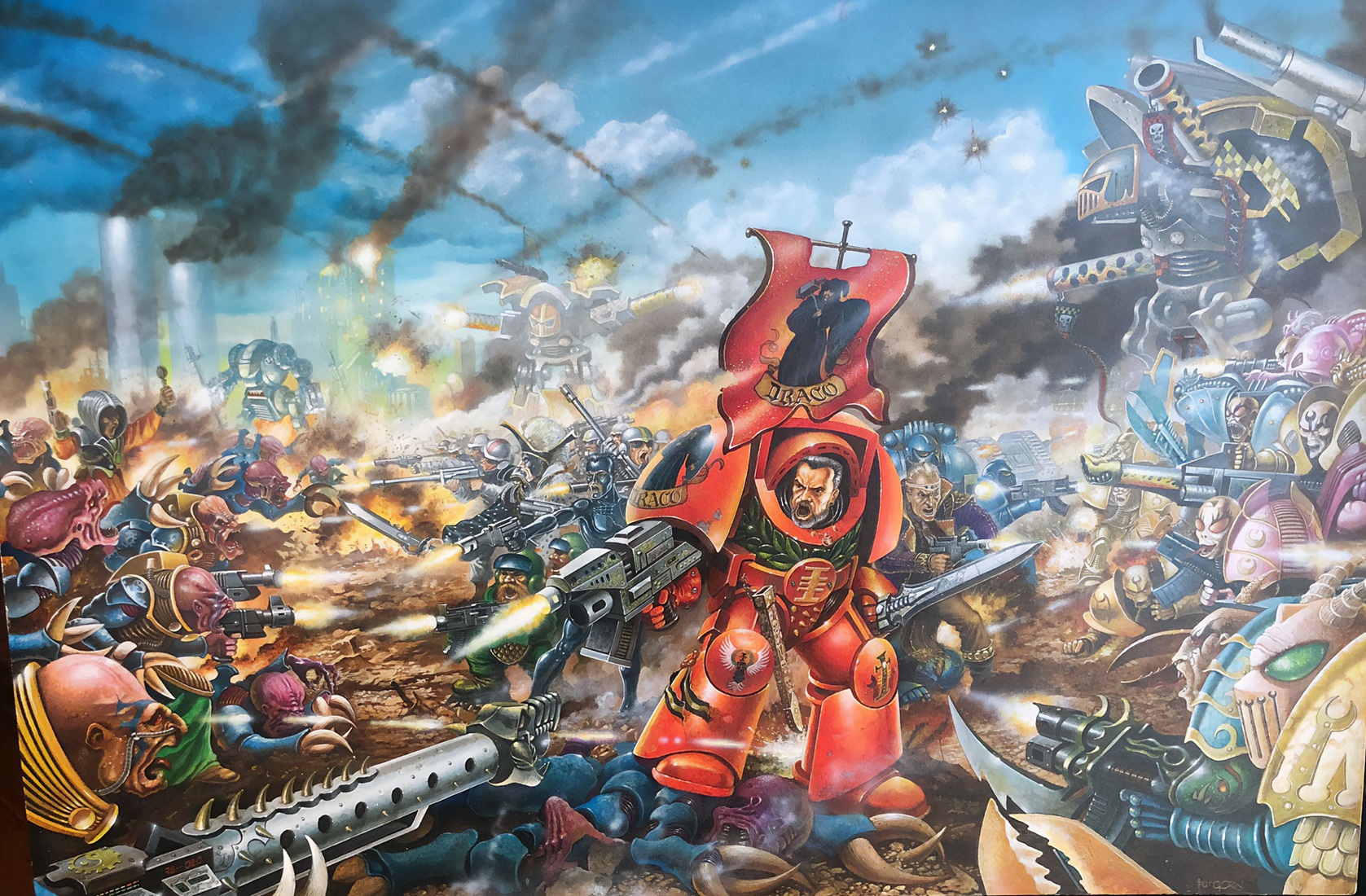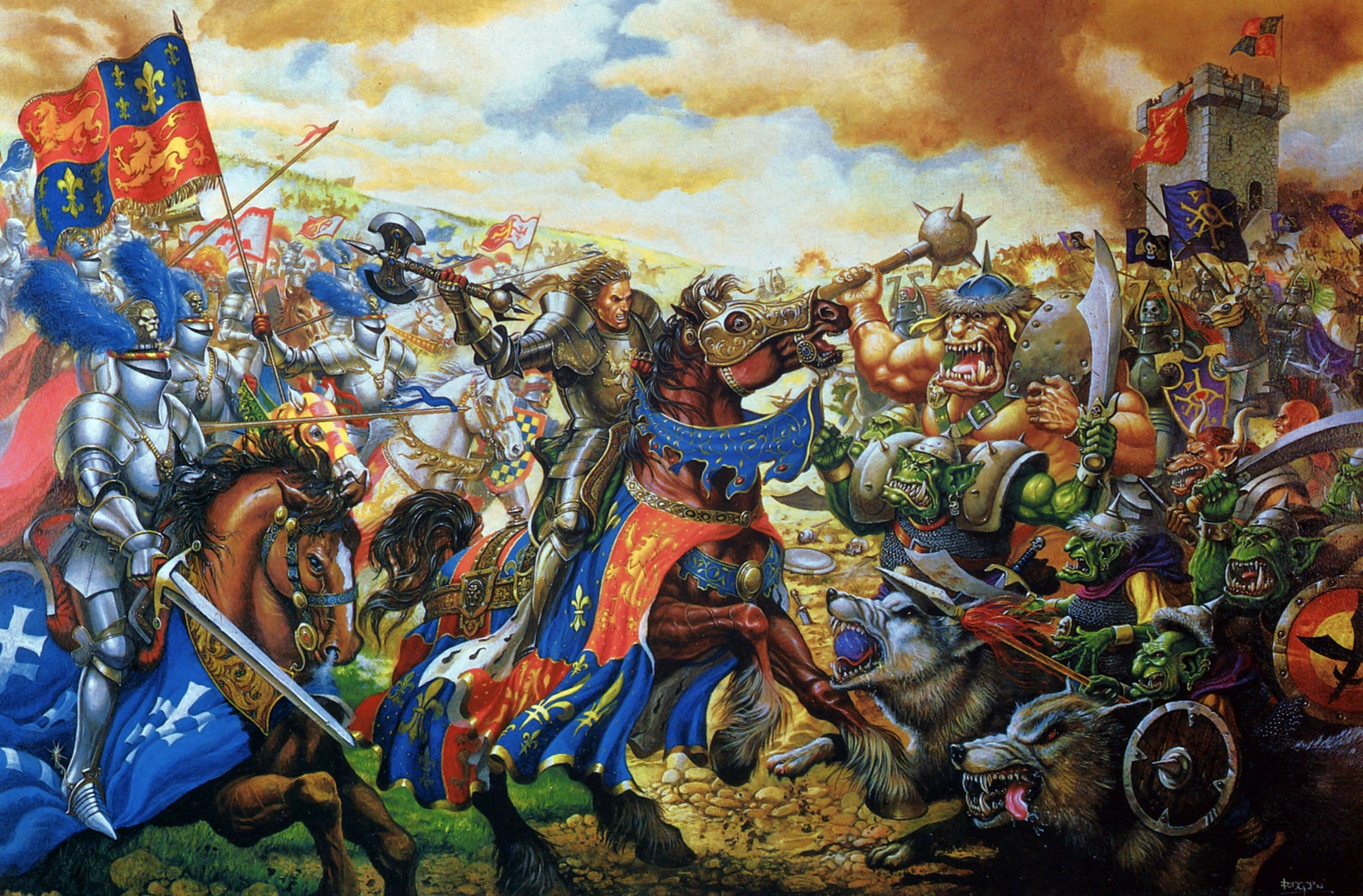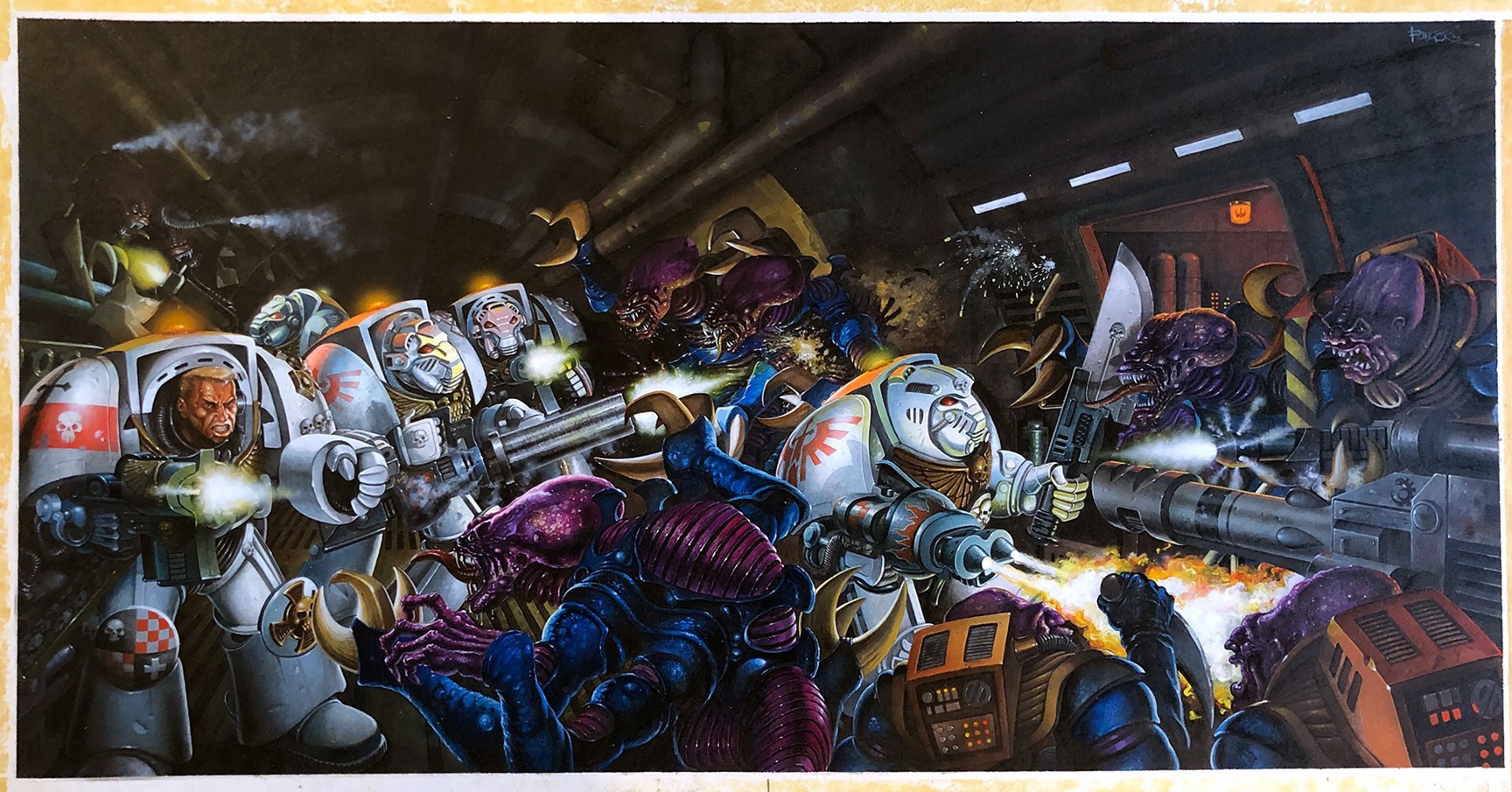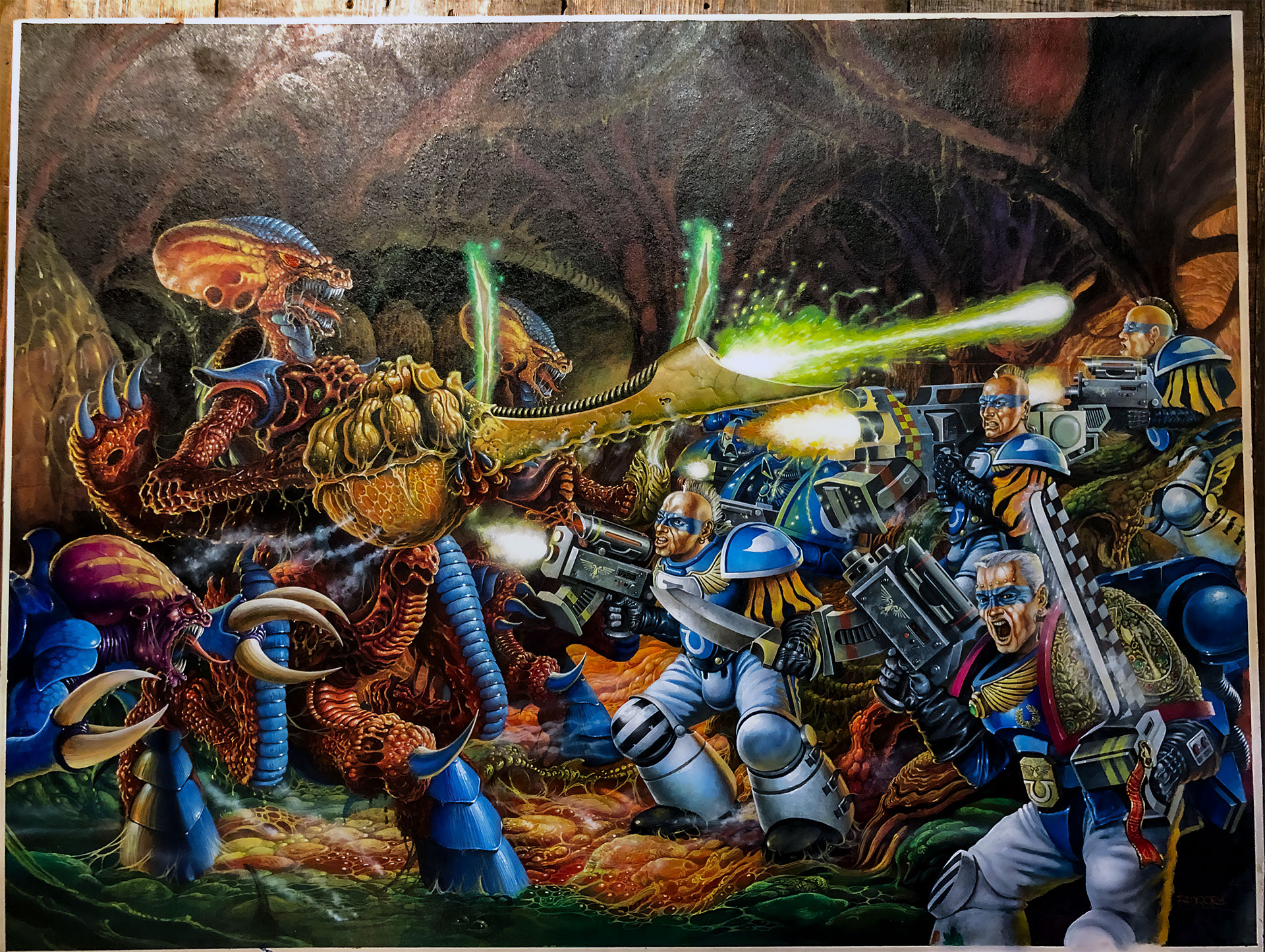Inquisitor Versus Genestealer Rogue Trader Oldhammer
Artist: Chris Baker
Crimson Inquisitor’s Charge: Oldhammer Chaos of Genestealer Cults and Titans
Clash in the Grimdark Future
This vivid Oldhammer painting erupts with the chaotic energy of a full-scale battlefield from the Rogue Trader era. At its center, a crimson-armored Inquisitor—bold, snarling, and adorned in baroque power armor—leads a desperate charge against a seething tide of Genestealer cultists. His banner, emblazoned with the word “Draco,” flutters behind him like a sacred relic of authority. Around him swarm Imperial Guardsmen, squat allies, and power-armored warriors, all firing into the xenos mass with grim determination. The landscape burns with craters, smoke trails, and the glow of heavy weapon fire, painting a vivid picture of apocalyptic warfare. In true Oldhammer style, the image is dense with color, caricatured faces, and retro sci-fi flair.
The Horror of the Genestealer Cult
On the right side of the battlefield, the Genestealer cult surges forward, their ranks swollen with hybrid monstrosities and mutated acolytes. Many are clad in pastel-colored armor—classic Rogue Trader aesthetics—wielding twisted weapons and expressions of fanatical glee. Some still show traces of their human ancestry, while others bear grotesque alien features: extra limbs, extended skulls, and slavering maws. Behind them, a massive Genestealer-aligned Knight looms, its once-holy chassis now corrupted and daubed in xenos iconography. The cult fights not for territory or survival, but for the imminent arrival of their star-born gods—the Tyranids. Their doctrine is a parasitic religion, promising salvation through infection and subjugation.
The Inquisition Takes Command
At the heart of the Imperial response is the Inquisitor, a towering figure of fury and resolve. Inquisitors in the Rogue Trader era were larger-than-life, judge-jury-executioners unbound by rank or protocol. The one depicted here is clad in crimson Terminator armor, likely from the Ordo Xenos, wielding a storm bolter and power sword to cleave through alien heresy. His role is not just to fight but to purify—to root out corruption, no matter how deep it has spread. Around him are varied Imperial forces, including Astra Militarum troops, Squats with heavy weapons, and fellow acolytes, all waging war in perfect synchronicity. His banner is not just decoration—it is an icon of Imperial will, inspiring loyalty and fear in equal measure.
Titans Walk Among the Smoke
In the background, mighty Titans and corrupted Knight-class walkers trade fire over the smoldering ruins of a city. The battlefield is framed by smoking towers and mushrooming explosions, giving the impression that this is just one part of a wider planetary war. The Titans on both sides are rendered with clunky, charming Oldhammer proportions—less sleek and more menacing in their mechanical simplicity. These god-machines are not mere vehicles but divine instruments of the Machine God or, in the case of the enemy, perverted symbols of rebellion. The juxtaposition of religious devotion and technological terror is central to Warhammer 40,000’s tone. Here, the Titans are both setting and participant—silent judges that level cities in the name of survival or extinction.
Oldhammer’s Unique Flavor
This artwork perfectly captures the spirit of the Oldhammer era, when Warhammer 40K was as much about satire and retro science fantasy as it was about grimdark horror. Every character is expressive, every weapon absurdly oversized, and every detail bursting with visual storytelling. This isn’t the polished minimalism of modern 40K—this is a universe where the ridiculous and the sublime collide in glorious chaos. The Genestealer Cult, in their rainbow armor and alien grotesquery, clash with the rigid, furious Imperium in a scene that feels more like a fever dream than military engagement. And yet, it is deeply faithful to the lore of the time, when the Imperium’s hold on reality was fragile and everything felt more unpredictable. This painting is not just nostalgic—it’s a celebration of the wild, imaginative roots of Warhammer 40,000.




